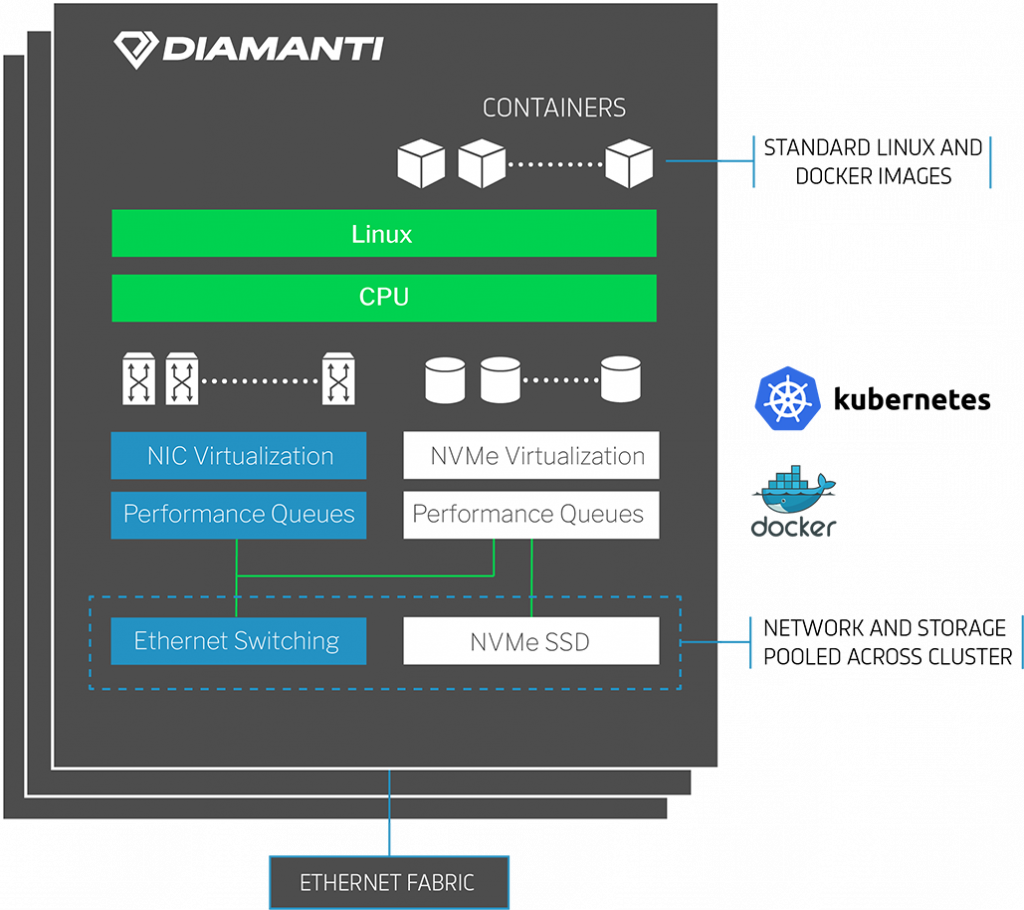Diamanti Updates Bare-Metal Kubernetes Appliance
Diamanti this week unveiled the second generation of a bare-metal 1u appliance for running Kubernetes that is based on the Intel Xeon Scalable Processors and Intel C620 series chipsets, which are formerly known as Purly and are optimized for memory-intensive workloads.
Company CEO Tom Barton says the D20 appliance from Diamanti takes advantage of PCIe cards to isolate the processing of storage and networking on a Kubernetes cluster from the core compute engine. That approach delivers a platform that runs Kubernetes applications as much as 10 to 30 times faster than rival platforms, he claims.
Moreover, Diamanti appliances leverage single-root IO/ virtualization capabilities embedded in Intel processors to make it possible to run Kubernetes without having to rely on virtual machines such as VMware, Barton adds. Much of the performance gains cited by Diamanti comes in part from the fact that the D20 eliminates the overhead that would be created by a virtual machine and the guest operating system deployed on it. All told, Diamanti claims the D20 appliance can deliver 1 million IOPS per node at sub-100µs latency.
A survey Diamanti conducted last year found that, because of performance and cost issues, 44 percent of IT professionals taking part were considering replacing at least some virtual machines with containers instead of deploying those containers on top of a virtual machine.
Barton says as more cloud-native applications find their way into production in on-premises IT environments, IT organizations will soon discover the need for an enterprise-grade appliance capable of running multiple applications on the same cluster at scale. At present, Diamanti has tens of customers, and Barton expects that number to increase significantly in 2019 as more containerized applications get deployed on on-premises IT environments.
Longer term, Barton also notes IT organizations will want to extend the reach of Kubernetes to other classes of processors such as graphical processor units (GPUs), which would not be possible when hosting Kubernetes. While Diamanti doesn’t support GPUs yet, the architecture of the company’s appliance is extensible enough to add support for GPUs and other processors sometime in the future. Currently, organizations that want to run Kubernetes on top of both industry-standard x86 processors and GPUs have had to rely on a custom white box.
In the meantime, Diamanti continues to invest in making it easier to deploy Kubernetes on its appliance. The latest version of its software makes it possible to not only deploy Kubernetes in less than 15 minutes, it also includes a multi-domain implementation of the open source LDAP directory. That capability is critical for IT administrators who otherwise would be overwhelmed by all the Kubernetes configuration settings they would otherwise have to learn and master.
Given how prevalent virtual machines are today in the enterprise, it’s not likely bare-metal servers will supplant them anytime soon. But as IT organizations become more comfortable with deploying Kubernetes in on-premises environments, it’s now only a matter of time before many more of them consider bare-metal servers to be a viable option.




